
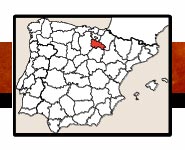

 |
 |
||
 |
|||
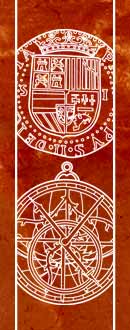 |
(40)/R-TE/RIOJ-Alta-40.jpg) |
-55/BOOK-cort-40.jpg) |
 |
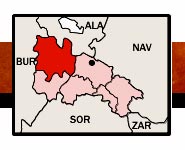 |
||
 |
|||
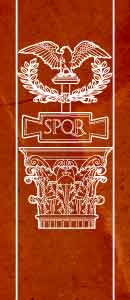 |
UBICACIÓNSANTO DOMINGO DE LA CALZADA: CATEDRAL: Santo Domingo de la Calzada se encuentra entre Burgos y Logroño, al sur de Miranda de Ebro. La alta torre de la catedral te facilitará el acceso. MURALLA La muralla rodea buena parte de la localidad. AYUNTAMIENTO En el casco antiguo de Santo Domingo de la Calzada en la Plaza de España. NAJERA: El Monasterio se encuentra en el casco antiguo de Najera, ciudad enclavada en la N-120 (Logroño-Burgos). CIHURI: La localidad de Cihuri se ubica entre las localidades de Haro, Sajazarra (que dispone de un gran castillo) y Casalarreina. |
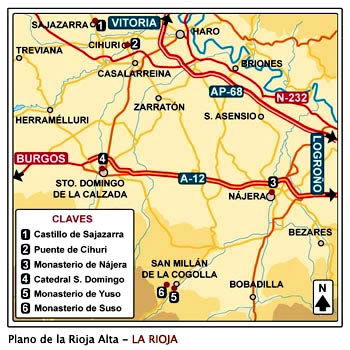 |
LOCATIONSANTO DOMINGO DE LA CALZADA: CATHEDRAL: Santo Domingo de la Calzada is located between Burgos and Logroño, south of Miranda de Ebro. The high tower of the cathedral will guide you. WALLS: The wall surround a good part of the town. TOWN HALL: In the old town of Santo Domingo de la Calzada in Plaza de España. NÁJERA: The Monastery is located in the old town of Najera, city located in the N-120 (Logroño-Burgos). CIHURI: The town of Cihuri is located between the villages of Haro, Sajazarra (which has a large castle) and Casalarreina. |
||||
 |
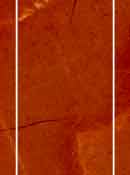 |
ACCESO PARA MINUSVÁLIDOSSANTO DOMINGO DE LA CALZADA: CATEDRAL: Acceso factible para usuarios de sillas de ruedas. MURALLA: El exterior es accesible para sillas de ruedas. AYUNTAMIENTO: El exterior es accesible para sillas de ruedas. NAJERA: Salvo la entrada al Panteón Real, el acceso de sillas de ruedas cuenta con pocos obstáculos CIHURI: Área un tanto irregular, pero accesible a sillas de ruedas. |
ACCESS FOR THE HANDICAPPEDSANTO DOMINGO DE LA CALZADA : CATHEDRAL : Access suitable for wheelchairs. WALLS : The outside is accessible for wheelchair users. TOWN HALL : Outside is accessible for wheelchair users. NÁJERA: Except for the entrance to the Royal Pantheon, wheelchair access has few architectural barriers. CIHURI: Irregular area, but accesible for wheelchairs |